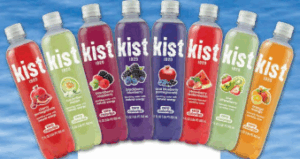The US Court of Appeals for the Ninth Circuit concluded that a non-fungible token (NFT) is a “good” under the Lanham Act but reversed the district court’s grant of summary judgment for trademark infringement because the owner did not prove as a matter of law that the defendants’ use was likely to cause confusion. The Ninth Circuit also affirmed the district court’s dismissal of the defendants’ counterclaim for declaratory relief regarding copyright ownership. Yuga Labs, Inc. v. Ryder Ripps and Jeremy Cahen, Case No. 24-879 (9th Cir. July 23, 2025) (Bade, Forrest, Curiel, JJ.)
Yuga Labs is the creator of the Bored Ape Yacht Club (BAYC) NFT collection. Yuga created this collection through a smart contract recorded on the blockchain Ethereum. Each BAYC NFT has a cartoon of a bored ape and a sequential unique identifier called an ape ID. Per its terms and conditions, BAYC NFT consumers receive commercial and personal rights free of royalty fees.
Ryder Ripps and Jermey Cahen created the Ryder Ripps Bored Ape Yacht Club (RR/BAYC) using the same ape images and ape IDs. The collection was also hosted on an Ethereum blockchain smart contract. They criticized Yuga for “using neo-Nazi symbolism, alt-right dog whistles, and racist imagery” and alleged that they created RR/BAYC as satire and criticism. Ripps made the RR/BAYC smart contracts’ names “Bored Ape Yacht Club” and made the smart contract symbol “BAYC.” Ripps’ website includes an artist statement that the artwork is a “new mint of BAYC imagery.” NFT marketplace websites for RR/BAYC displayed a large header “Bored Ape Yacht Club” and in a smaller text “@ryder_ripps.”
Yuga sued Ripps and Cahen for several claims, including trademark infringement based on a false designation of origin theory, false advertising, and cybersquatting. In response, the defendants asserted that Yuga did not have enforceable trademark rights, and even if it did, the defendants’ use was protected by fair use and the First Amendment. The defendants asserted several counterclaims, including knowing misrepresentation of infringing activity under the Digital Millenium Copyright Act (DMCA), and sought declaratory judgment of no copyright ownership.
The district court granted Yuga’s motion for summary judgment on its false designation of origin and cybersquatting claims. Yuga withdrew its remaining claims, so the trial proceeded only for equitable remedies on the false designation of origin and cybersquatting. At trial, the district court found that Yuga’s BAYC marks were unregistered trademarks. The district court awarded Yuga disgorgement of the defendants’ profits, maximum statutory damages, and attorneys’ fees after finding that the case was exceptional due to the defendants’ willful infringement, bad faith intent to profit, and litigation conduct. The defendants were also permanently enjoined. The defendants appealed the grant of summary judgment and sought vacatur of the remedies.
The Ninth Circuit first addressed the defendants’ argument that NFTs are not goods protected by the Lanham Act. The Court concluded that NFTs are goods under the Lanham Act based on a US Patent & Trademark Office report that determined them as such. The Court also [...]
Continue Reading
read more


 Subscribe
Subscribe



